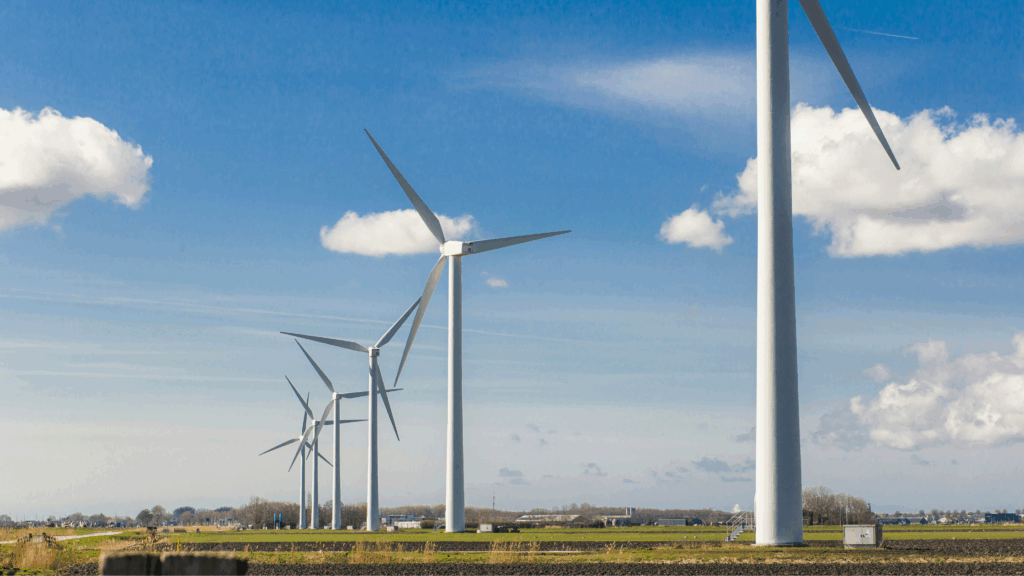As AI evolves and proliferates at breakneck speed, its insatiable need for energy is surpassing the capacity of today’s infrastructure.
For context: ChatGPT now receives more than one billion requests per day, and is the fifth most visited website globally (after Google, YouTube, Facebook and Instagram). According to OpenAI CEO Sam Altman, each query to ChatGPT uses 0.00034 KWh of electricity and 0.000085 gallons of water – about the same as powering a high-efficiency lightbulb for a couple of minutes, and roughly one-fifteenth of a teaspoon of water.
It might not seem like a lot, but multiply those numbers by a billion every day, and you’ve got a massive power problem – especially considering ChatGPT queries are becoming more complex. Case in point: to generate a five-second video, AI models use about the same amount of energy as required to power a microwave for an hour. “AI comes with many power requirements, including data storage, training language models and cooling for the data centres,” says Stephanie Tsui, Chief Sustainability Officer and Portfolio Manager at Genus. “These centres are huge consumers of energy.”
And now, with the rise of agentic AI, energy consumption is set to expand exponentially. The International Energy Agency forecasts that global electricity demand from data centres, AI and the cryptocurrency sector could more than double by 2026, reaching over 1,000 terawatt-hours annually – roughly equivalent to the power consumption of a country the size of Japan. AI data centres are being built around the world to meet the surging demand, but many require 100 – 1,000 megawatts, about the equivalent to the energy demands of a medium-sized city.
This rapid growth in energy consumption is forcing companies to rethink how AI is powered. And that means opportunities for renewable energy sector investors.
Renewable energy can help to reduce AI’s footprint

AI’s energy needs come with a significant environmental footprint. Carbon emissions for many leading tech companies have been steadily on the rise: Google’s carbon emissions rose 48% over the past five years and Microsoft’s by 23%, thanks in part to AI. And last year, carbon emissions from electricity consumption used by AI chipmakers grew by 357% globally.
“The world needs all sorts of energy sources to satisfy this demand, and it’s a great opportunity for renewable energies to take off.”
Stephanie Tsui, Chief Sustainability Officer / Portfolio Manager, Genus
Some cities are restarting retired coal plants in order to meet the energy demand, causing further increases in carbon emissions. The good news? Many of these same tech companies are working to source renewable energies such as wind, solar, geothermal and nuclear to fill the gaps. “The world needs all sorts of energy sources to satisfy this demand, and it’s a great opportunity for renewable energies to take off,” Tsui says. “It’s well known that the big tech companies are the biggest buyers of wind and solar energy,” she adds. “Google is securing new geothermal projects to power its data centres. Meta is working to fire up new power plants. Microsoft also recently entered into a long-term power purchase agreement to restart a nuclear power unit in Pennsylvania.”
As it turns out, AI’s energy demands may become a catalyst for renewable energy acceleration.
AI can also optimize renewables’ efficiency

As much as AI needs renewable energy sources to run, it can also help to mitigate their downsides.
“Renewable energy is often only intermittently available,” Tsui says, “so it’s not as reliable as traditional energy sources. But AI can help with things like grid optimization, load forecasting and weather forecasting for solar and wind. It can increase the reliability and efficiency of these energy systems by predictive maintenance of the infrastructure and real time grid management. This helps to reduce risks for renewable energy investors.”
AI itself is reinforcing the development – and effectiveness – of renewable energies, making them more efficient and predictable, and reducing the risks for investors. (And it brings myriad other potential sustainability benefits, too).
Opportunities for sustainable and impact investors

We’ve written before about what investors should know about AI’s role in wealth management, because we use it ourselves for quantitative analysis and data-backed decisions. But they should also know that opportunities are emerging to support the renewable energy companies that are helping to power the AI revolution.
“For our Fossil Free investment strategies, one of the key criteria is that companies have to be relying on renewable and cleaner sources of energy,” Tsui says. “And within many of our portfolios, we have been looking at AI-related companies, including semi-conductors, data centres and hardware, to identify companies that align with our investment criteria from both a financial and sustainability perspective.”
The carbon footprint of AI is no longer a niche concern; it’s a material risk that can affect a company’s valuation, brand reputation and long-term viability. While supporting clean energy and renewable energy infrastructure has always been important to our clients, it’s become increasingly critical in the AI-era. “If we’re not encouraging more renewable energy development, these companies will resort to the dirtiest sources of energy,” Tsui says. “It is very important for renewable energy development to catch up.”
Get started today with our values-based investment services.
Impact investments involve financial risk, and returns are not guaranteed. Investors should consider their financial goals, risk tolerance, and consult a financial professional before investing. To determine if impact investing aligns with your financial goals, speak with a qualified advisor.
This material is for informational purposes only and does not constitute investment advice or a recommendation to buy or sell any specific securities or investment products. Mentions of specific companies are for illustrative purposes only and do not constitute investment advice or recommendations. Investing involves risk, including possible loss of principal. Investors should consult with a licensed financial advisor to determine whether any investment strategy aligns with their individual risk tolerance, investment objectives, and financial circumstances.
References:
O’Donnell, J. (2025b, May 23). We did the math on AI’s energy footprint. Here’s the story you haven’t heard. MIT Technology Review. https://www.technologyreview.com/2025/05/20/1116327/ai-energy-usage-climate-footprint-big-tech/
The gentle singularity. (n.d.). Sam Altman. https://blog.samaltman.com/the-gentle-singularity
O’Donnell, J. (2025, May 23). We did the math on AI’s energy footprint. Here’s the story you haven’t heard. MIT Technology Review. https://www.technologyreview.com/2025/05/20/1116327/ai-energy-usage-climate-footprint-big-tech/
The rise of the cognitive enterprise: Why agentic AI platforms are the next great business revolution. (2025, June 25). World Economic Forum. Retrieved July 11, 2025, from https://www.weforum.org/stories/2025/06/cognitive-enterprise-agentic-business-revolution/
Global electricity demand rose moderately in 2023 but is set to grow faster through 2026. (n.d.). In Iea. Retrieved July 11, 2025, from https://www.iea.org/reports/electricity-2024/executive-summary
Federation of American Scientists. (2025, June 27). Measuring AI’s Energy/Environmental footprint to access impacts. https://fas.org/publication/measuring-and-standardizing-ais-energy-footprint/
Google 2024 Environmental Report. (n.d.). Google. Retrieved July 11, 2025, from https://www.gstatic.com/gumdrop/sustainability/google-2024-environmental-report.pdf
2025 Environmental Sustainability Report. (n.d.). Microsoft. Retrieved July 11, 2025, from https://cdn-dynmedia-1.microsoft.com/is/content/microsoftcorp/microsoft/msc/documents/presentations/CSR/2025-Microsoft-Environmental-Sustainability-Report.pdf#page=12
Greenpeace East Asia. (2025, April 10). Artificial intelligence supply chain threatens climate progress in East Asia – Greenpeace East Asia. https://www.greenpeace.org/eastasia/press/68006/artificial-intelligence-supply-chain-threatens-climate-progress-in-east-asia/#:~:text=The%20manufacturing%20process%20of%20AI,steps%20to%20procure%20renewable%20energy.
Energy Transition Investing Trends | Morgan Stanley. (n.d.). Morgan Stanley. https://www.morganstanley.com/ideas/sustainability-industry-trends-energy-transition-AI
Clifford, C. (2023, January 18). Amazon, Meta and Google buy more clean energy than any other companies. CNBC. https://www.cnbc.com/2023/01/18/amazon-meta-and-google-buy-more-clean-energy-than-any-other-companies.html
Knapschaefer, J. (2025, May 27). Google secures approval for geothermal to power data centers. Engineering News-Record. https://www.enr.com/articles/60746-google-secures-approval-for-geothermal-to-power-data-centers
Company, F. (2025, June 26). Meta and Constellation partner on clean energy project. Meta Newsroom. https://about.fb.com/news/2025/06/meta-constellation-partner-clean-energy-project/
Kimball, S. (2024, September 20). Constellation Energy to restart Three Mile Island nuclear plant, sell the power to Microsoft for AI. CNBC. https://www.cnbc.com/2024/09/20/constellation-energy-to-restart-three-mile-island-and-sell-the-power-to-microsoft.html
Why AI’s role in advancing sustainability is underestimated. (2025, March 3). World Economic Forum. Retrieved July 11, 2025, from https://www.weforum.org/stories/2025/03/can-ai-foster-sustainability/











